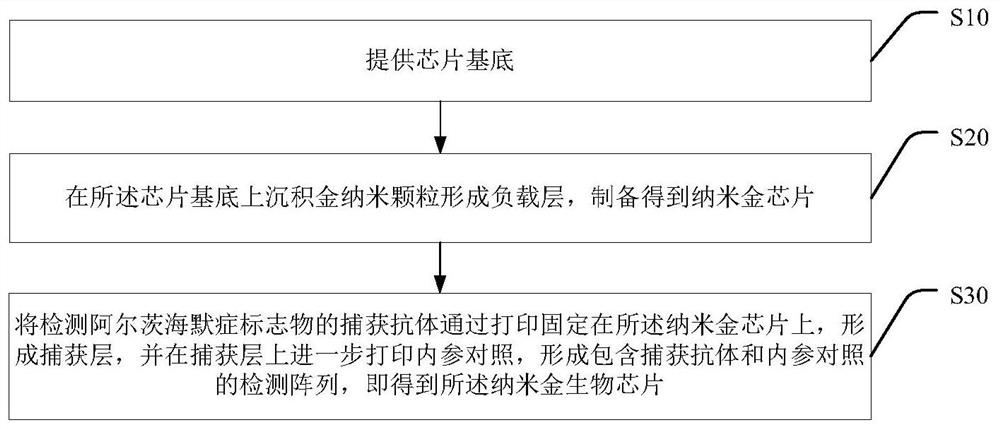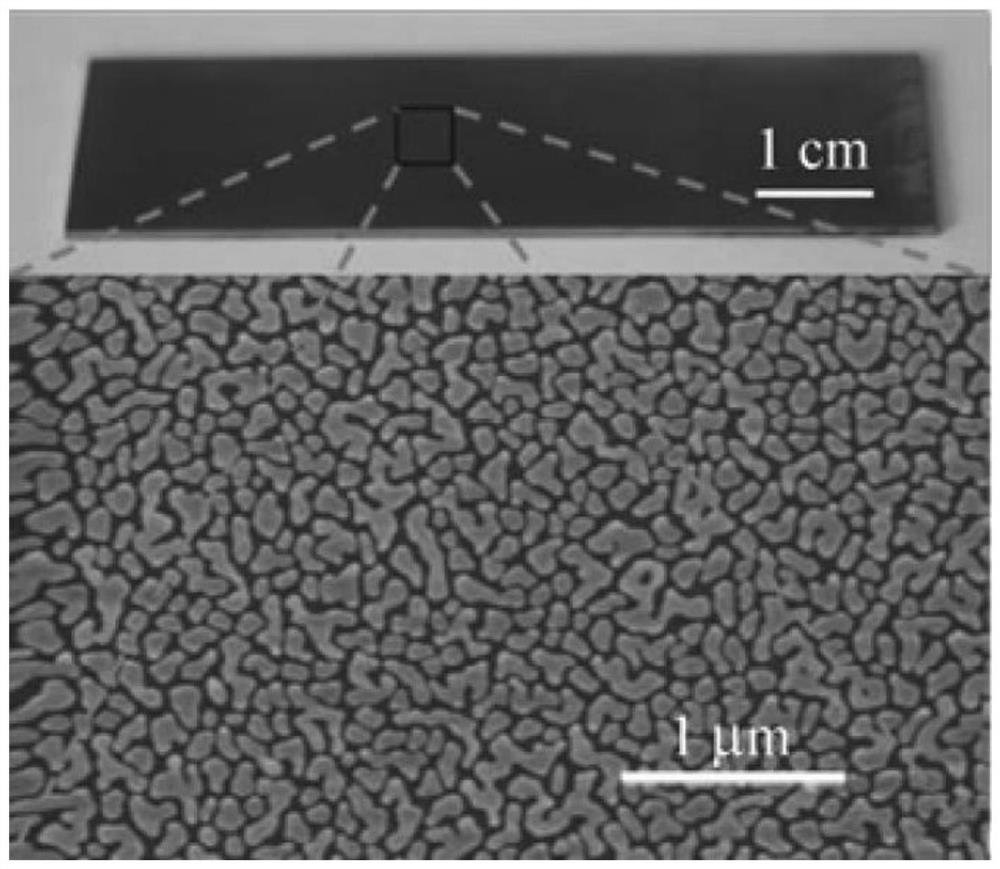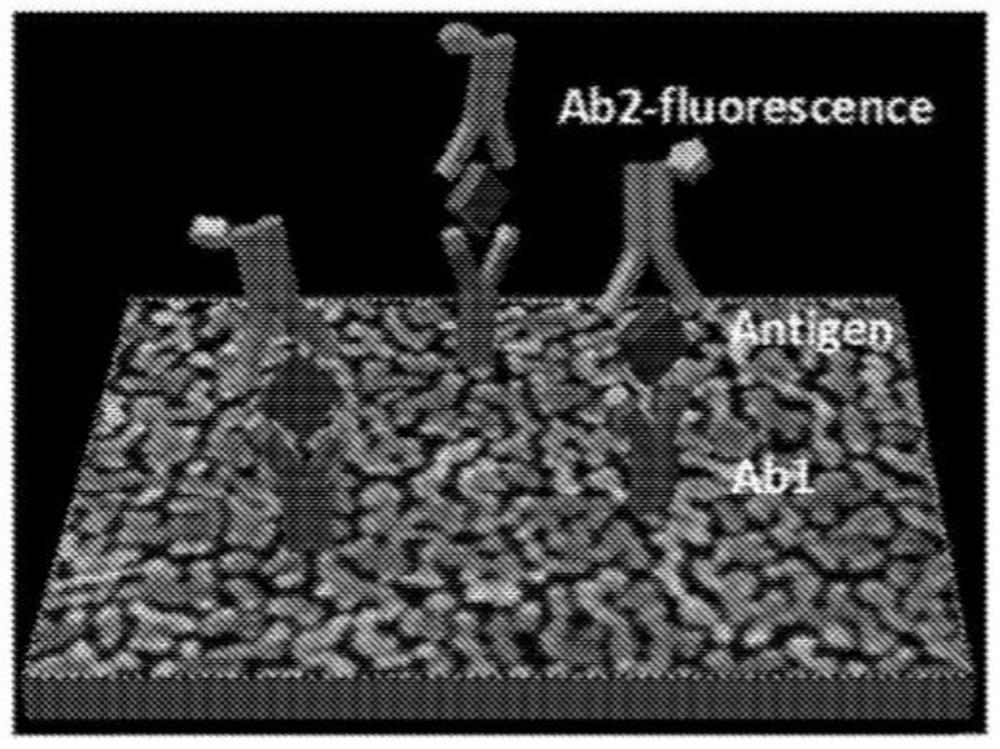Nanogold biochip for detecting Alzheimer's disease marker as well as preparation method and application of nanogold biochip
An Alzheimer's disease, biochip technology, applied in measurement devices, material excitation analysis, fluorescence/phosphorescence, etc., can solve the problems of not reaching the picogram level, inaccurate results, low sensitivity, etc., and improve the emission intensity. , the effect of improving the detection signal and improving the sensitivity
- Summary
- Abstract
- Description
- Claims
- Application Information
AI Technical Summary
Problems solved by technology
Method used
Image
Examples
Embodiment 1
[0080] Preparation of Aβ40 nano-gold biochip and protein detection
[0081] 1. Preparation of nano-gold biochip
[0082] (1) Depositing gold nanoparticles by wet method on a glass substrate to obtain a nano-gold chip;
[0083] (2) Print the capture antibody of Aβ40 with a concentration of 1.0 μg / mL on the nano-gold chip by using a micro-spotter;
[0084] (3) Further print the chicken IgY antibody on the chip as an internal reference control to obtain a nano-gold biochip;
[0085] 2. Coupling of capture antibody and fluorescent molecule IRDye800
[0086] (4) Mix the capture antibody of Aβ40 and the fluorescent molecule IRDye800 according to the molar ratio of 1:10, react for half an hour, then mix evenly, and continue to react for half an hour;
[0087] (5) After the reaction is completed, add an appropriate amount of PBS to make the volume of the reaction system reach 500 μl;
[0088] (6) Add 10 mL of PBS to the NAP-5 column, wash the column, and when the solution in the c...
Embodiment 2
[0102] Preparation of Aβ42 nano-gold biochip and protein detection
[0103] The difference between the preparation of the Aβ42 nano-gold biochip and the preparation method of the Aβ40 nano-gold biochip in Example 1 is that the capture antibody of Aβ42 is printed on the nano-gold chip to obtain the Aβ42 nano-gold biochip;
[0104] The difference between the detection of Aβ42 protein and the detection of Aβ40 protein in Example 1 is that the standard curve of Aβ42 is obtained by using the Aβ42 protein standard, and the protein to be tested is Aβ42 protein.
[0105] Fluorescent images of Aβ42 and standard curves such as Figure 5 Shown, where, y=0.55x+0.34, R 2 = 0.994.
[0106] In summary, the present invention proposes a method for preparing a nano-gold biochip for detecting Alzheimer's disease markers. Gold nanoparticles are deposited on the chip substrate, so that the surface of the chip is distributed with many discontinuous, Gold nanoparticles with uniform spacing, and t...
PUM
| Property | Measurement | Unit |
|---|---|---|
| Diameter | aaaaa | aaaaa |
Abstract
Description
Claims
Application Information
 Login to View More
Login to View More - Generate Ideas
- Intellectual Property
- Life Sciences
- Materials
- Tech Scout
- Unparalleled Data Quality
- Higher Quality Content
- 60% Fewer Hallucinations
Browse by: Latest US Patents, China's latest patents, Technical Efficacy Thesaurus, Application Domain, Technology Topic, Popular Technical Reports.
© 2025 PatSnap. All rights reserved.Legal|Privacy policy|Modern Slavery Act Transparency Statement|Sitemap|About US| Contact US: help@patsnap.com



